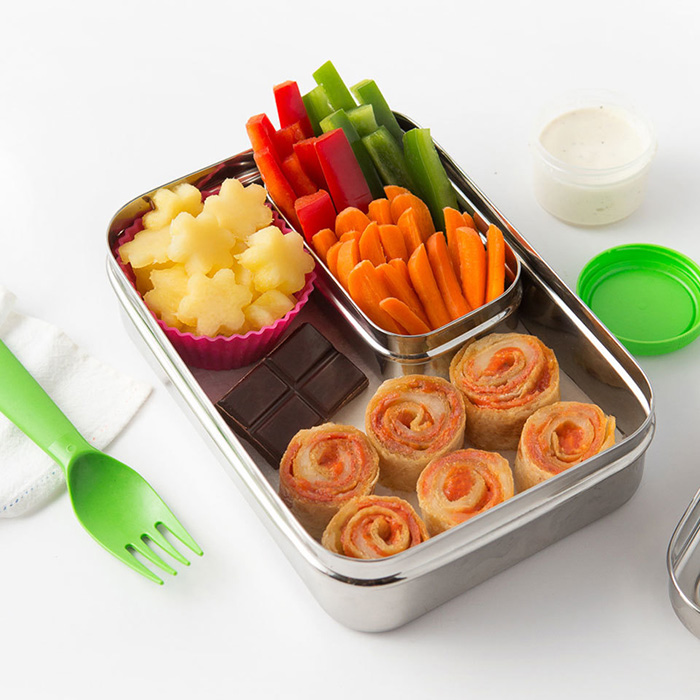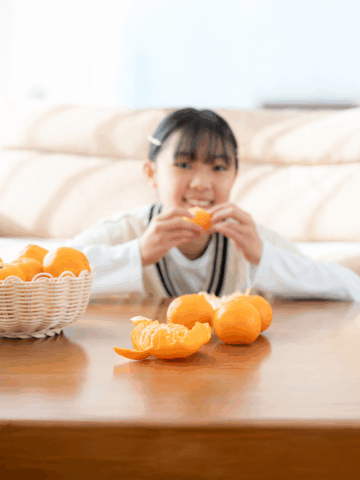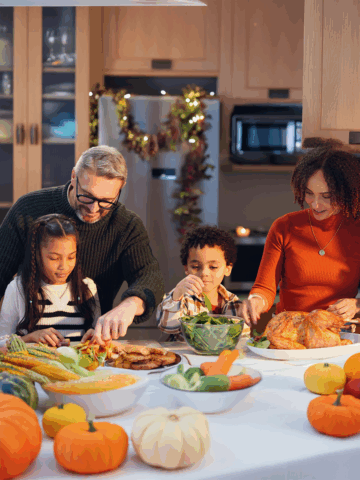By Emely Reyes, clinical dietitian at CHOC
School-age children, ages 6 to 12 years, are steadily growing and need nutritious meals and snacks to support their growth and healthy eating habits. Parents will notice that most kids at this age have grown out of picky eating, but are starting to form eating habits based on outside influences like friends, family and the media.
Kids at this age are also spending more time at school or in extracurriculars than they did as preschoolers, which means that they have some freedom to make food choices on their own.
How to help your child eat their lunch at school
Because school-aged children have more food choices, a typical concern of parents of this age group is that their children are not eating healthy while at school. It is common for children to come back with lunch boxes that are still partially full or to skip lunch at school altogether.
To help your child get the nutrition they need from their lunch at school, use the following tips:
Ask your child why they didn’t eat their lunch.
If certain items are coming home in their lunchbox uneaten, try to ask your child why and get their input. Take your child grocery shopping with you and let them choose some nutritious foods to swap.
Offer bite-size foods that are quick to eat.
If your child is forgetting to eat lunch because they were in a hurry to go and play, nutritious finger foods may help them fuel up for the rest of the school day. For example, grape tomatoes, sliced cucumber or berries are easier to eat than a side salad or fruit they may have to peel. Sandwiches or wraps may be easier to consume than soup or leftovers.
Pack smaller portions.
If your child is eating some of their lunch but leaving a large portion of it behind, consider packing smaller portion sizes and including some healthy snacks they can eat later. Children have small stomachs and may not eat large portions at meals. Some healthy snacks could be an apple and cheese, or trail mix instead of packing chips or pastries. This way, even if your child has a small appetite at lunch, they are still consuming nutritious foods throughout the day.
Know that lunchboxes can make a big impact.
An ideal lunchbox has visual interest and is one that a child can easily open. Choose a lunch box with a favorite character or theme to make your child excited for lunch. It’s important to make sure the lunchbox can be easily opened by your child. Keep in mind that there sometimes is only one lunch monitor for a roomful of busy children. Smaller children especially may find it difficult to open containers or to be heard when they ask for help. Before sending any new containers to school, be sure to test them out or communicate with the lunch monitor beforehand that your child may need help with difficult lids.
Keep hot foods hot and cold foods cold.
Choose an insulated lunch bag and consider using cold packs or double-walled stainless-steel containers to keep kids’ food at the correct temperature. Some kids are sensitive to texture changes that happen when foods get too warm, like cold vs room temperature fruit. Addressing food temperatures may improve the intake of foods kids take to school and has the added benefit of preventing foodborne illness since bacteria thrive when foods sit at room temperature for too long.
Have fun with food!
Cut foods into fun shapes or consider purchasing cookie cutters or food picks with decorative tops to help add some fun to your child’s lunch. You may be surprised at how adding just a few star shapes or food picks can help hold kids’ interest and improve their intake. Separating foods by using colorful silicone baking cups may be helpful if your child does not like their foods to touch. Older children may enjoy helping to pack and prep their lunch, with may help them to eat more of it at school.
Have a conversation about school-provided lunches.
If your child receives a school-provided lunch and is not eating it, try to see why that is. Some kids think the foods served are unhealthy or they do not want to be seen getting free lunch. School lunches can provide key nutrients and are a cost-effective choice for many families. Make time to look at the school lunch menu and choose some school lunch options that your child would like to try. Discuss how they can make healthy choices from the foods offered.
If packing lunch is not an option, make sure to have positive conversations around school lunch while at home and pack some nutritious snacks just in case your child chooses not to eat it that day.
Physical activity ideas for school-aged kids
School-aged children need to get at least 60 minutes of physical activity daily. Kids 6 to 8 years old are sharpening basic skills like jumping, throwing, kicking and catching.
Some kids like to do this by joining organized sports teams where they can also learn about teamwork, the value of practice and setting goals. Kids 9 to 12 years old are refining, improving and coordinating these skills. They typically become more committed to their sport or choose to drop out as competition heats up and the level of play improves.
If your child is not interested in traditional sports, that’s okay. The important part is finding an alternative way to be active. Consider biking, skateboarding, karate, swimming or playing outside as alternatives. Take walks as a family or explore a new hiking trail together.
The key is for your child to find an activity they enjoy and for them to partake in it every day. Additionally, it is recommended that kids limit non-academic screen time to 2 hours per day to reduce the amount of time they are sedentary.
Recipe ideas for school-aged children

Pepperoni pizza roll-up bento lunch
Ingredients:
1 8-inch whole-wheat tortilla
2 tablespoons pizza sauce
6 pepperoni slices
3 tablespoons shredded part-skim mozzarella
1 cup bell peppers and carrot sticks
2 tablespoons creamy dressing, such as ranch
½ cup small pineapple pieces
1 (1 ounce) square dark chocolate
Instructions:
Place tortilla on a plate and spread pizza sauce over it. Top with pepperoni, then sprinkle cheese on top. Microwave on high until the cheese is just melted, 40 to 45 seconds. Carefully roll the tortilla up. Let cool for 10 minutes before slicing into pieces, if desired. Pack the slices in a medium container. Pack bell peppers and carrots in another medium container. Nestle a small, dip-size container among the vegetables and add dressing. Pack pineapple in one small cup and nestle chocolate in between the containers.
Nutrition facts:
Serving Size: 1 box. Per Serving: 476 calories, Protein 14g, Carbohydrates 66g, Fat 17g

Lunchbox turkey and ham skewers
1 slice of smoked ham
1 slice honey turkey breast
1/2 cup red grapes
2 oz. cubed jack cheese
1/2 cup green grapes
1/2 cup cubed apples
Instructions:
Pre-cut wooden grilling skewers to fit into the size of your resealable lunchbox container. Cut ham and turkey slices into 1″ strips. Fold accordion-style and slide onto the wooden skewers. Alternate with grapes, apples, and cheese cubes. Keep cold (with a cold pack) in a lunchbox until ready to eat.
Nutrition Information:
Serving size: 3 skewers. Per Serving: Calories: 146, Protein: 12g, Carbohydrates: 14g, Total Fat: 7g
Get more expert health advice delivered to your inbox monthly by subscribing to the KidsHealth newsletter here.
Learn more about CHOC’s Clinical Nutrition Program
At CHOC, we specialize in providing a full continuum of pediatric nutrition services, including inpatient and outpatient services, depending on our patients’ needs.





